A light-year is how astronomers measure distance in space. It’s defined by how far a beam of light travels in one year – a distance of six trillion miles. Think of it as the bigger, badder cousin of the inch, the mile, the kilometer, and the furlong. If you like to keep up with what’s going on in astronomy, it’s worth spending a little bit of time understanding what the deal is with this funny unit of measurement.

Have you ever been on your way to meet some friends and, while en route, called to tell them you’re running late? If you’re like me, you might tell them “I’m about ten minutes away”. You’re using how long it will take you to get there as a substitute for how far away you are. Astronomers do the same thing when figuring out the distance to a star or galaxy, but instead of relying on how fast they could drive or walk, they use a beam of light as their reference.
Why do things this way? First, light is convenient. Throughout the universe, all light travels at exactly the same speed: about 670 million miles per hour. We don’t usually think about light traveling anywhere because when we flick on a light switch – there it is! We don’t have to wait for the room to light up. It happens instantaneously. Except that it’s not instantaneous, just insanely fast. In fact, let’s pause for a second and reflect on how ludicrously quick the speed of light is.
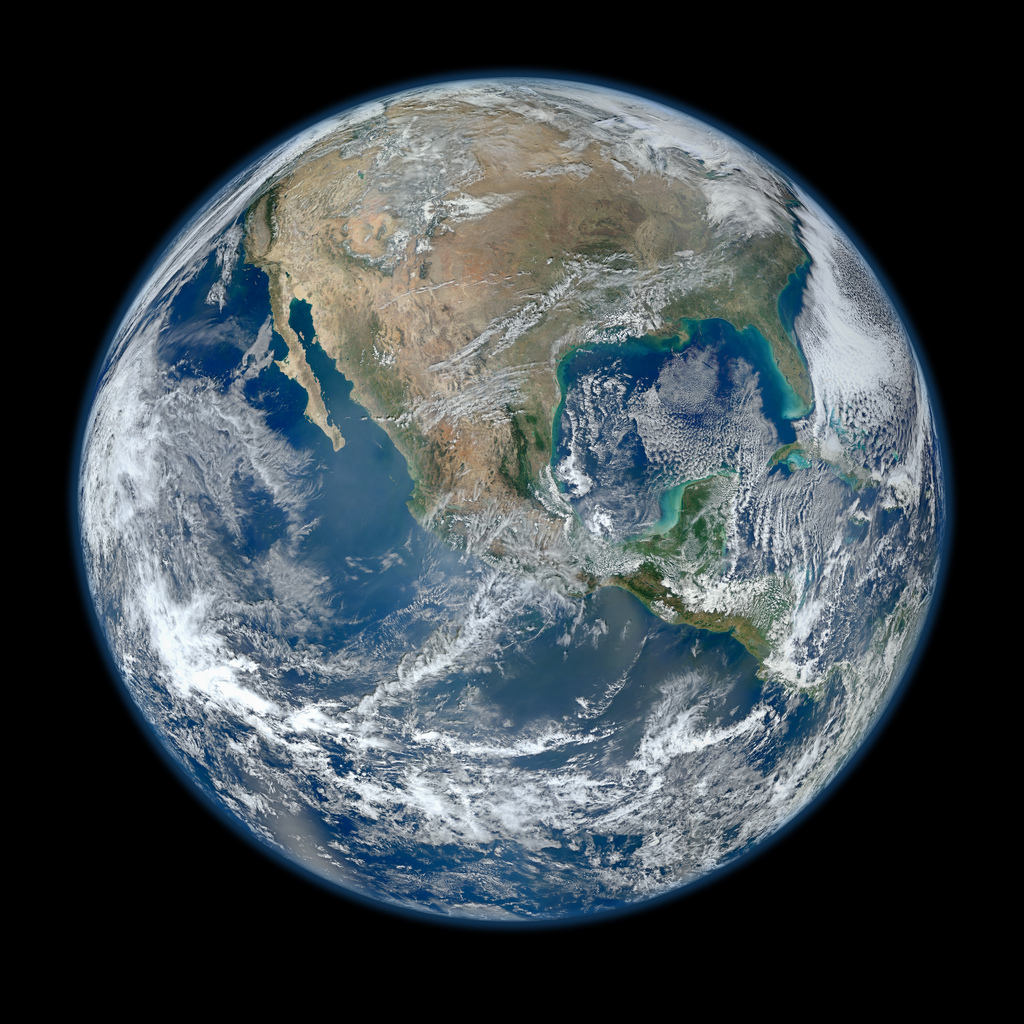
Credit: NASA/NOAA/GSFC/Suomi NPP/VIIRS/Norman Kuring
Traveling at that speed, you would encircle the globe of Earth almost eight times in one second.
Impressive! Certainly faster than traveling by airplane. So if you were to travel off the Earth in a straight line at light speed, you’d get pretty far in the same amount of time, right? Actually, since space is so vast, you wouldn’t have even made it to the moon. Travel to the moon takes about a second-and-a-half, at light speed. Travel to the sun at light speed takes about eight minutes. Can you even imagine? Traveling at a speed where you cross nearly 200,000 miles every second for eight full minutes would only get you to the center of our solar system.
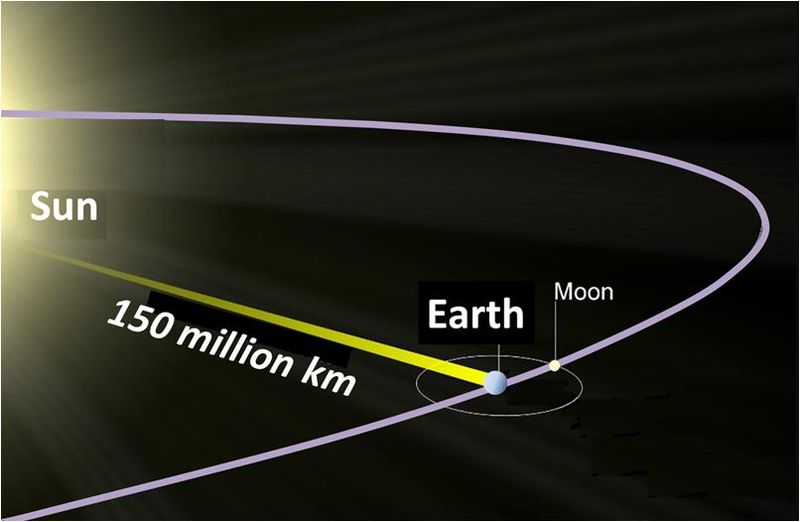
The fact that light takes time to get anywhere has an interesting side effect. If light from the sun takes eight minutes to get to us, then we’re actually seeing the sun as it was eight minutes ago. We’re looking into the past!
While this sounds a little crazy, it’s actually something with which you’re already familiar. If you’ve ever seen fireworks, for example, you know that you see the explosion and then a few seconds later you hear it. If you close your eyes during the fireworks show, you’d only have your ears to know when things were happening. Since it takes some time for the sound to get to you, you’d always be hearing things a few seconds after they happened. The same happens with light: we only see something once the light from that event actually gets to our eyes. When we’re looking across a room, the time delay is only a few billionths of a second. But when we start looking across large enough distances, the light becomes noticeably delayed like the sounds are from exploding fireworks.
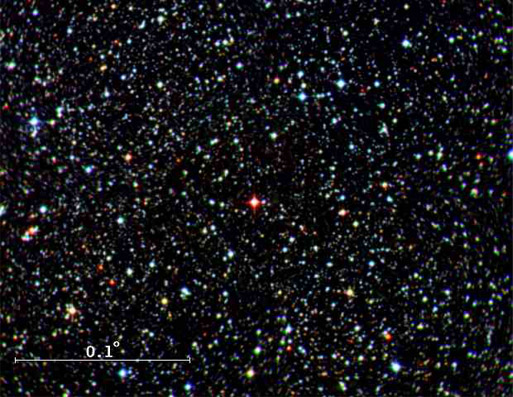
The main reason for using light years, however, is because the distances we deal with in space are immense. If we stick to miles or kilometers we quickly run into unwieldy numbers just measuring the distance to the nearest star: a dim red dwarf called Proxima Centauri that sits a mere 24,000,000,000,000 miles away! Using a longer yard stick, so to speak, helps keep the numbers at least manageable. To an astronomer, the distance to Proxima Centauri is only four light years. Put another way, it takes the light from our stellar next door neighbor four years to get to Earth.
The Milky Way galaxy in which our sun and all the stars we see at night reside spans 100,000 light-years from one end to the other. Putting that into perspective, the duration of recorded human history is roughly 5,000 years. So light from a star at one end of our galaxy takes 20 times longer than all of recorded history to get to the other end.
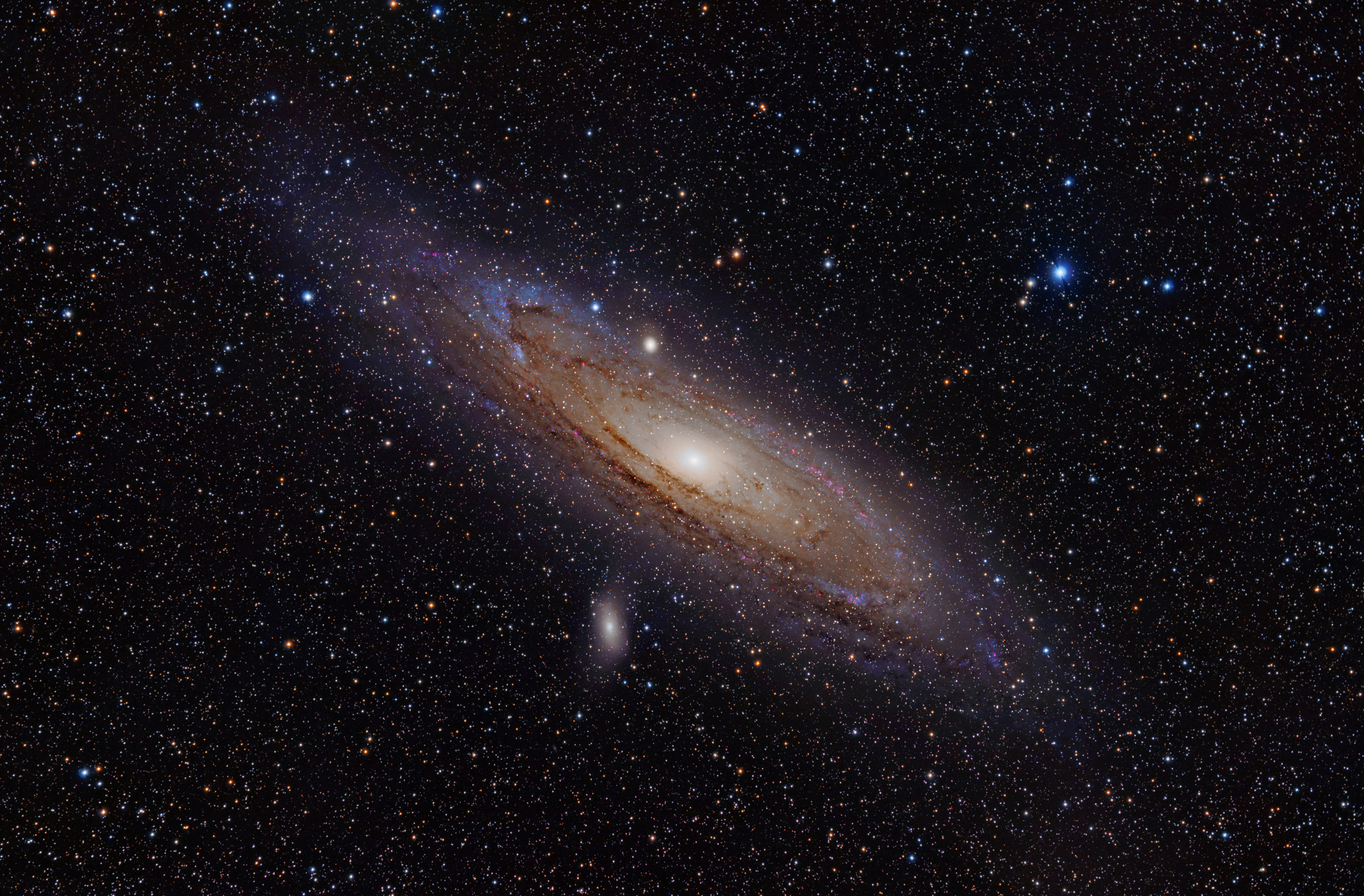
Moving beyond our galaxy, it’s just over two million light years to our nearest galactic neighbor, the Andromeda galaxy. The light we currently see from that galaxy left there about the same time the ancestors of modern humans were first discovering stone tools.
Our last stop takes us to the edge of the visible universe. It’s also here where the trickiness of measuring distance in an ever-expanding universe becomes apparent. The light we see coming from the farthest depths of the universe has been traveling across the cosmos for almost three times longer than our planet has existed: nearly 14 billion years! But there’s a catch: we cannot say that the edge of the visible universe is 14 billion light-years away.
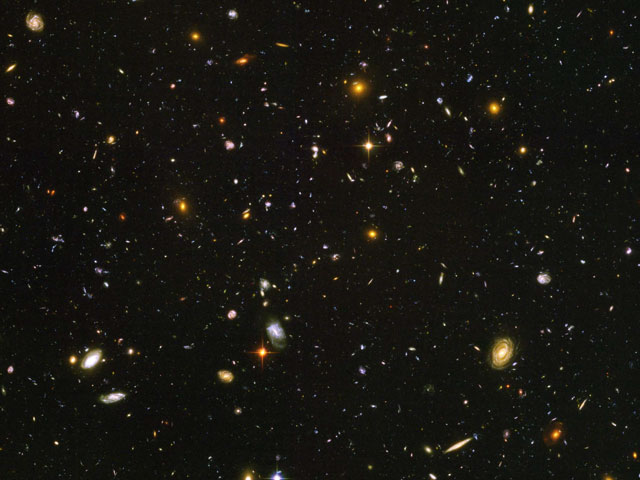
Why? Because the universe has grown larger in that time! A galaxy whose light took 14 billion years to reach our little planet has, in the intervening aeons, moved even further away. The current physical distance to that remote beacon, if we stopped the universe from expanding and stretched out a really long tape measure, is just over 46 billion light years! Even in light years, measuring distances across the universe becomes unwieldy. But measuring in something familiar, like miles, is truly humbling. From here to the edge of our vision spans a distance of approximately 276,000,000,000,000,000,000,000 miles.
And it’s getting bigger every day.
Bottom line: How far is a light-year? It’s the distance a beam of light travels in one year – a distance of six trillion miles.











